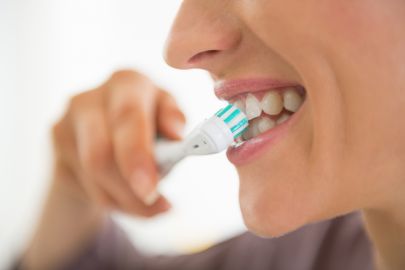It’s an exciting time when your child’s teeth start to fall out! This is an important milestone and a rite of passage, marking the transition from childhood to adolescence. But when should you expect your child’s teeth to start falling out? Knowing the answer can help you prepare for the changes your child is about to experience. This guide will help you understand when to expect your child’s teeth to start falling out, as well as provide tips for helping them care for their new teeth. With the right guidance, you can ensure your child’s teeth remain healthy and strong throughout their teenage years.
When do children’s teeth start to fall out?
Teenagers’ teeth are generally ready to fall out when they are between the ages of 10 and 12 years old. Teens’ teeth are more prone to decay and susceptibility to cavities during this time, which can lead to tooth decay and tooth loss. Teens in the United States begin losing their baby teeth around the ages of 7 and 8 years old. Teens are more likely to lose their teeth between the ages of 12 and 14 years old, when the rest of their permanent teeth begin to come in. Tooth loss is a normal process that occurs during adolescence. It doesn’t mean your child will lose all their teeth; it’s just when their teeth are likely to fall out. Your child’s diet, dental hygiene habits, and genetics play a role in when their teeth will fall out. Sometimes, a tooth will grow in sideways or come out at a different angle than the rest of the tooth. This can happen when a tooth doesn’t have room to grow in or grow out.
Your Child First Dentist Trip
During this trip, take your child to the dentist to get their teeth cleaned and x-rayed. The cleaner, the better! Ask their dentist to review your child’s x-rays with you and explain the findings. This will help your child understand why they need to change their dental habits, such as brushing and flossing. It’s also important for your child to receive regular dental check-ups, as they will experience more tooth decay during this time. If your child has a history of dental problems, such as having cavities or braces, schedule any appointment they’re due. If your child doesn’t currently have dental insurance, ask their dentist if they can file an insurance claim. This can help you and your child get a discount on dental check-ups and procedures in the future.
How to prepare for the transition
Now that you know when your child’s teeth will start to fall out, you can prepare your child for the transition. This can help your child feel more confident and less anxious about their new teeth. The more comfortable your child is, the less likely they are to experience anxiety about their new teeth. Make sure your child is aware of the process and why it’s happening. Discuss how their teeth will change and how this can affect their daily life. Let your child know that it’s OK to be nervous, and that you will be there to support them during this exciting time in their lives.
How to help children care for their new teeth
During this time, make sure your child takes good care of their teeth. Brushing and flossing their teeth twice a day is important, especially after eating. Be sure to discuss what kinds of foods are good for their teeth and what kinds are bad for teeth. You can also take your child to a dental visit and learn where they can get free or discounted dental care, such as a clinic or a community program. Encourage your child to use a toothbrush with fluoride and a fluoride toothpaste. Fluoride is important for helping prevent cavities and strengthening teeth. Ask your child’s dentist for more information about how to brush and floss their teeth properly.
Tips for brushing and flossing
Brush their teeth twice a day. Use an age-appropriate toothbrush and toothpaste. Use an age-appropriate toothpaste. Choose an age-appropriate brushing technique. Mix the toothpaste thoroughly with the toothbrush before using them. Clean behind and between your child’s teeth with a finger once a day. Use an age-appropriate technique, such as pressing on either side of their teeth. Floss their teeth once a day. Use an age-appropriate technique, such as using a sliding motion. Simply practicing the brushing and flossing techniques will help your child get used to caring for their teeth.
Conclusion
While it’s exciting when your child’s teeth start to fall out, remember that it’s important to celebrate each milestone. It’s important to help your child care for their new teeth, and it can be helpful to have an understanding partner during this time. The staff at i-Smile Family Dentistry is here to be that extra resource for your southaven child dentistry needs.




